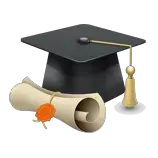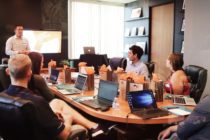Considering a career in medicine? It is highly recommended that you try out a few medical internships in high school before committing to a pre-med track.
In reality, most high school students hoping to get into medicine end up changing their major during college when medical courses become too challenging.
However, we don’t need to tell you that medical school is hard. It will take many years and thousands of dollars. Therefore, it will be a great idea to dip your toes in the water before fully immersing yourself.
This guide will explain everything about a medical internship, the experiences open to you as a high school student, and a list of medical internships for high school students.
Basically, a medical internship is a focal point in the transition point from medical student to doctor. From its origins in hospital apprenticeships, this experience of professionalization and initiation to direct responsibility for the patient has followed an erratic path.
Modern internships in the United States began in the late 19th century, and the evolution of many of its characteristics has been determined more by socioeconomic and political issues than by consideration of educational goals.
The recent move to incorporate internships into residency programs is now being reconsidered because there is a new appreciation of the role that the internship experience can play in the professional maturation of the physician.
Table of Contents.
- What is a medical internship?
- Who is a medical intern?
- How much do interns earn?
- How long does an internship program last?
- Medical internships for high school students abroad.
- #1 Medical Immersion Summer Academy (MISA)
- #2. National Conference for Student Leadership in Medicine and Health Care
- #3 Penn Medicine Summer Program for High School Students
- #4. The Center of Excellence High School Summer Enrichment Science Academy (HSSESA)
- #5. Stanford Junior Medical Sciences Program
- #6. Della Keats Health Sciences Summer Program
- #7. Arthritis Foundation Summer Science Internship Program
- #8. Center for Disease Control (CDC) Museum Camp of Disease Detectives
- #9. Child Health Research Summer Internship
- #10. Indiana University Simon Cancer Center Summer Research Program
- #eleven. Summer Internship Program for High School Students at Cincinnati Children’s Hospital
- #12. Summer Medical Academy
- #13. Kendall Smith Healthcare Exploration Scholarship Program
- #14. Healthcare Career Exploration Camp
- #15. Lifespan Summer Youth Employment Program
- #16. Quick Start Program Howard Hughes Medical Institute – College Park, Maryland
- #17. McLaughlin Research Institute for Biomedical Sciences Summer Internship – Great Falls, Montana
- Medical Internship FAQs for High School Students
- Conclusion
What is a medical internship?
Basically, a medical internship is the first year of training after medical school. It is more commonly called the first year of residence or PGY-1 (Post-Graduate Year-1). Subsequent years are called PGY-2, PGY-3, etc.
Internships and other pre-college medical programs offer experiences like working in a lab, conducting trials, gaining hands-on clinical experience, and much more. You will learn in different settings, including universities, hospitals and clinics, and research facilities.
However, for high school students, a medical internship will refer to a period of training and apprenticeship with medical experts that will help them get used to what to expect in medical school.
Who is a medical intern?
A medical intern is a recent medical school graduate who is in their first year of on-the-job postgraduate training. Interns work in hospitals, where they often rotate between different departments so they can gain knowledge of different medical specialties.
Additionally, the Accreditation Council for Graduate Medical Education, ACGME, which is the organization that certifies graduate medical training programs, now refers to interns as first-year residents or Postgraduate Year 1, or PGY-1. The terms are used mutually in many training hospitals and other settings.
How much do interns earn?
Medical interns, who are students in hospital training to become physicians or specialists, receive a modest salary of $35,000, which is funded by the federal Department of Health and Human Services (primarily Medicare).
How long does an internship program last?
Typically, an internship program lasts for the semester or quarter of the academic institution. Therefore, many universities operate on a semester system where each semester lasts between 14 and 16 weeks.
However, the fall semester typically begins in August or September and runs through early December, while the spring semester begins in January or February and runs through May or June. Therefore, many schools also offer a summer term that lasts approximately 10-12 weeks.
Medical internships for high school students abroad.
The more doctors see and experience, the better doctors they will become. Success in the medical field is about combining education with extensive exposure to a wide range of medical problems that affect various people from all walks of life.
By completing a medical internship abroad, struggling physicians can gain valuable exposure to the medical field in an environment they likely won’t find in their home country. International internships look fantastic from both a professional and philanthropic point of view, therefore a medical internship abroad is something every medical student should seriously consider.
Here are medical internships this 2022:
#1 Medical Immersion Summer Academy (MISA)
At MISA, you will study all about healthcare through hands-on skills training (ECG, sutures, CPR, splinting, and taking vital signs), observation, mentoring, and clinical immersion.
You will also participate in VIP luncheons with healthcare professionals, examine patients and medical procedures, and participate in “getting into the shoes of an MD” skills workshops and in-patient cases and discussions with physicians.
The five-day program is accessible to students in grades 9-12 in the Bay Area and costs $900. You must be at least 15 years old to start the program. Apply from January 4 to March 8.
#2. National Conference for Student Leadership in Medicine and Health Care
NSLC offers high school students an environment to learn about controversial medical topics, current health care challenges, and excellent scientific research in areas such as cancer and HIV/AIDS. The program is offered in:
- American University
- Georgia Tech
- Harvard Medical School
- northwestern university
- rice university
- UC Berkeley
- UCLA
- University of Washington
- Vanderbilt University
- University of Miami
Students will perform clinical rounds, learn medical exams and surgical techniques, and engage in diagnosis and medication while solving the mystery of a fatal outbreak sweeping the nation. You will also have the opportunity to take an online college credit course taught by American University faculty after completing the program.
Each campus offers two nine-day summer sessions. The cost is $3,195 ($3,295 in San Francisco and Chicago and $3,495 in Boston). Admission is rolling, and spaces are filling up fast.
You are guaranteed admission as long as space is available if you receive an invitation through being nominated by your school or an alumnus of the program or if you are recognized by a talent search and are also able to apply. Scholarships are available.
#3 Penn Medicine Summer Program for High School Students
Spend four weeks during June and July at the University of Pennsylvania Perelman School of Medicine learning from highly accredited Penn faculty. Through lectures and interactive labs, she will learn about prominent topics such as transplant surgery, emergency medicine, cancer, resuscitation science, kidney disease, and sports medicine.
In the afternoons, you’ll participate in virtual and simulated hands-on experiences at Penn’s Clinical Simulation Center and other sites. You will also be able to witness the surgery live in the Penn Surgical Amphitheater.
Juniors and seniors ages 16 to 18 can participate in this residential medical program. The cost is $7,995. Applications close on March 8, 2022.
#4. The Center of Excellence High School Summer Enrichment Science Academy (HSSESA)
Growing juniors and seniors have the opportunity to participate in HSSESA’s six-week curriculum that concentrates on science-related topics including biology, chemistry, medical terminology, mathematics, computer science, and occupational exposure in clinical settings.
Students learn in an academic setting five days a week studying the essential material needed for a pharmacy or related specialty or health program.
The program’s mission is to support young and underrepresented minority students to pursue a career in pharmacy and related professions, as well as to acquire mentoring relationships with health professionals and graduate students.
For this reason, students who are underrepresented minorities and/or economically disadvantaged are given preference in the admissions process. Students who live in Washington, DC, Maryland, or Virginia also receive special consideration.
The program is free and covers most costs, including lodging, meals, and activities.
#5. Stanford Junior Medical Sciences Program
In this five-week residential program, low-income and underrepresented high school and sophomores living in Northern and Central California participate in and observe medical experiences such as faculty lectures, labs, college admissions orientation, mentoring, and practical medical activities.
Students participate in a medical school anatomy course and lab, an internship at Stanford Health Care, college admissions workshops, a research project, behind-the-scenes tours of Stanford Health Care, and more.
The program runs from June through July and is tuition-free. Applications are due February 13, 2019.
#6. Della Keats Health Sciences Summer Program
Offered through the University of Alaska WWAMI School of Medical Education, the Delia Keats program exists to support high school students’ interest in medical professions.
High school juniors and seniors in Alaska can participate in this four-week program in July and August, studying about careers in health care and getting an introduction to college life.
To participate, students must come from an ethnic minority or economically disadvantaged background, live in rural Alaska, be a first-generation American and the first in their families to attend college, and/or speak English as a second language. The program is free and offers a small allowance to cover food and other expenses. Housing is provided.
#7. Arthritis Foundation Summer Science Internship Program
Through the Rheumatology and Immunology Laboratories at Stanford University and the University of California, San Francisco, high school juniors and seniors and college freshmen and sophomores can complete an eight-week medical internship.
The 12 selected students work in leading clinical and research laboratories under the supervision of respected scientists at Stanford University and the University of California, San Francisco (UCSF). The internship lasts eight weeks and students work 40 hours/week in the basic laboratory (bench) research or epidemiological/translational (patient-oriented) clinical research.
The program offers a $1,500 stipend to high school participants.
#8. Center for Disease Control (CDC) Museum Camp of Disease Detectives
At CDC headquarters in Atlanta, Georgia, high school juniors and seniors have the opportunity to spend five days learning about public health.
Topics vary and may include public health interventions, global health, infectious diseases, chronic diseases, injury prevention, data analysis, surveys, school wellness programs, violence prevention, environmental health, emergency preparedness, outbreaks, science communication, laboratory technology, disease surveillance, epidemiology, and public health law.
Activities also differ and may include reenacted outbreaks, mock press conferences, global health and environmental activities, a lab session, an introduction to chronic disease surveillance, public health law, and briefings by CDC scientists from around the world. world renown.
The application will be submitted from January 25 to March 29, 2019. The program is free and open to residents of Atlanta, who must provide their own housing. There are three sessions in June and July.
#9. Child Health Research Summer Internship
Held at Children’s Hospital Colorado/the University of Colorado at the Anschutz Medical Campus, this medical internship is open to improving high school seniors, college students, and first-year medical students.
Students participate in a series of research conferences and present their own research upon completion of the program, as well as work with mentors from the Department of Pediatrics.
Participants receive a $3,500 stipend to help with travel and lodging expenses. The internship lasts for two months, from June to August, and applications are due February 1, 2019.
#10. Indiana University Simon Cancer Center Summer Research Program
Participants in this eight-week program are paired with mentors and work 40 hours a week on projects that include laboratory research, computer database research, or clinical research.
They also attend weekly workshops on topics related to admission to graduate and professional study programs.
The program operates from June to July. Students must have completed their junior year of high school or be undergraduate college student who has completed 24 credits. The application closes on February 1, 2019. Participants receive a stipend.
# 11. Cincinnati Children’s Hospital High School Summer Internship Program
Basically, high school students will work with a trainer in one of 10 pediatric clinical specialties in this eight-week program for graduating seniors from the Cincinnati area. Participants also participate in group activities including an afternoon hands-on training session with computerized simulated pediatric patients at the SIM Center, a summer intern alumni luncheon, and a presentation by the assistant dean for admissions at the UC that offers tips to prepare for the medical exam. School admission.
The medical internship program culminates in a graduation party with student presentations about their experiences.
Students work more than 20 hours per week and are compensated at $8.55 per hour. The program begins in June and applications are due on March 18, 2019.
#12. Summer Medical Academy
Hosted by Rady Children’s Hospital in San Diego, Summer Medical Academy offers interactive lectures and discussions on healthcare topics, practical skills clinics, career panels, team-building activities to learn new techniques and meet future colleagues, and more.
There are two two-week programs in June and July. Students also participate in group projects on public health challenges.
Open to students in grades 9-12 who are between the ages of 15 and 19, the program costs $2,450 to attend. Partial scholarships are available. Submit your application before February 22, 2019.
#13. Kendall Smith Healthcare Exploration Scholarship Program
Sponsored by the Lutheran General Hospital Law Service League, fellowship participants spend six weeks in the summer involved in a medical field of their choice in a hospital setting. Students give a presentation about their experience in front of staff and guests at the end of the program.
You must be a junior or senior at the time of application and apply before April. Proposed participants are accepted on the basis of health career interest, participation in extracurricular activities, and school performance. There are thirteen $600 scholarships available, and recipients must work a minimum of 20 hours/week.
# 14. Healthcare Career Exploration Camp
This free program for Nebraska or Iowa area students in grades 10-12 allows participants to learn from specialists in areas such as:
- athletic training
- clinical dietetics
- clinical engineering
- neuropsychology
- Nursing
- Occupational Therapy
- Pharmacy
- Physiotherapy
- speech and language pathology
- surgical technology
- radiation therapy
- radiological technology
- respiratory care
The program is offered at six CHI Health locations in Nebraska. The application opens in February; Admission is rolling. Space is limited by location, and past participants are waitlisted to give new students the opportunity to attend.
#fifteen. Lifespan Summer Youth Employment Program
This eight-week paid summer work experience at a Lifespan or Lifespan Corporate Services hospital is open to individuals ages 16-19 who live in Providence, Mount Hope, or Newport, Rhode Island. You must have a valid CNA (Certified Nursing Assistant) license and you will be placed in one of the following areas:
- Radiology
- Physiotherapy
- Cardiology
- Nursing
- Transportation
- processing center
- Human Resources
- Food and nutrition
- respiratory care
The program also provides career guidance after graduation, with some participants finding employment after completion. Participants earn a salary of $10.10/hour. Applications are open from November to January and you must participate in an interview if one is offered. The program runs from June to August.
#sixteen. Quick Start Program Howard Hughes Medical Institute – College Park, Maryland
The Howard Hughes Medical Institute Jump Start program opens its doors to 50 students for a full week. It focuses on research in the biomedical sciences on the campus of the University of Maryland.
This is a STEM program located in College Park, MD. His main focus for next summer 2022 is the exploration of the use of molecular and cellular techniques to diagnose and treat diseases. Students participate in seminars and workshops throughout the week.
Applicants for the Howard Hughes Medical Institute Jump Start Program must be high school juniors and seniors to compete. You must have completed AP courses in Chemistry and Biology before applying.
Payment Information: The application fee is $200 per applicant.
#17. McLaughlin Research Institute for Biomedical Sciences Summer Internship – Great Falls, Montana
The McLaughlin Research Institute for Biomedical Sciences Summer Internship is open to both high school and undergraduate students. This 8-week program is provided by the McLaughlin nonprofit organization that conducts research in neurogenetics.
Learn skills you can use in your medical field of study related to degenerative nerve diseases like Alzheimer’s and Parkinson’s.
The McLaughlin Research Institute Summer Research Program is located in Great Falls, MT. It was created for high school students who want to become doctors.
Some extracurricular activities you will participate in include:
- conduct investigative science
- Attend seminars and workshops.
- Participate in laboratory research projects.
Medical Internship FAQs for High School Students
Do interns give stipends or paid salaries?
A stipend is a predetermined amount of money paid to apprentices, interns, and students to help offset expenses. Stipends are often awarded to those who are not eligible to receive a regular salary in exchange for the tasks they perform. A stipend is generally a lower salary than a salary.
When should I apply for this program?
If you are applying for a spring internship, you should look in October or November. And if you want a summer internship, you should start looking in October of the previous year (just to make sure the company you’re interested in doesn’t have deadlines too early).
How much can I earn as an intern?
The National Association of Colleges and Employers (NACE) reported that the average hourly wage for undergraduate interns increased from $16.35 in 2014 to $18.06 in 2017. With paid internships, students are typically paid weekly, bi-weekly, or monthly, or they are provided with a stipend.
Is there an age requirement for this program?
Most hospital volunteer opportunities for high school students are open to people between the ages of 15 and 18.
Benefits of this program?
Internships are a great way for high school students to gain experience, gain new skills, and learn more about different jobs and career fields. Internships can involve many duties and responsibilities, but generally provide the intern with entry-level experience in a certain job or profession.
How else can I benefit from this program?
High school students can apply to the BS/MD programs. If accepted, students will embark on a program that allows them to go directly to medical school after earning a bachelor’s degree without applying for admission to medical school. Students must maintain a certain GPA while pursuing their degree, stay away from criminal activity, etc.
Conclusion
If you are considering a career in medicine, we recommend trying out some medical experiences in high school before committing to a pre-med career.
However, we don’t need to tell you that medical school is hard. It will take many years and thousands of dollars. Therefore, it will be a great idea to dip your toes in the water before fully immersing yourself.






